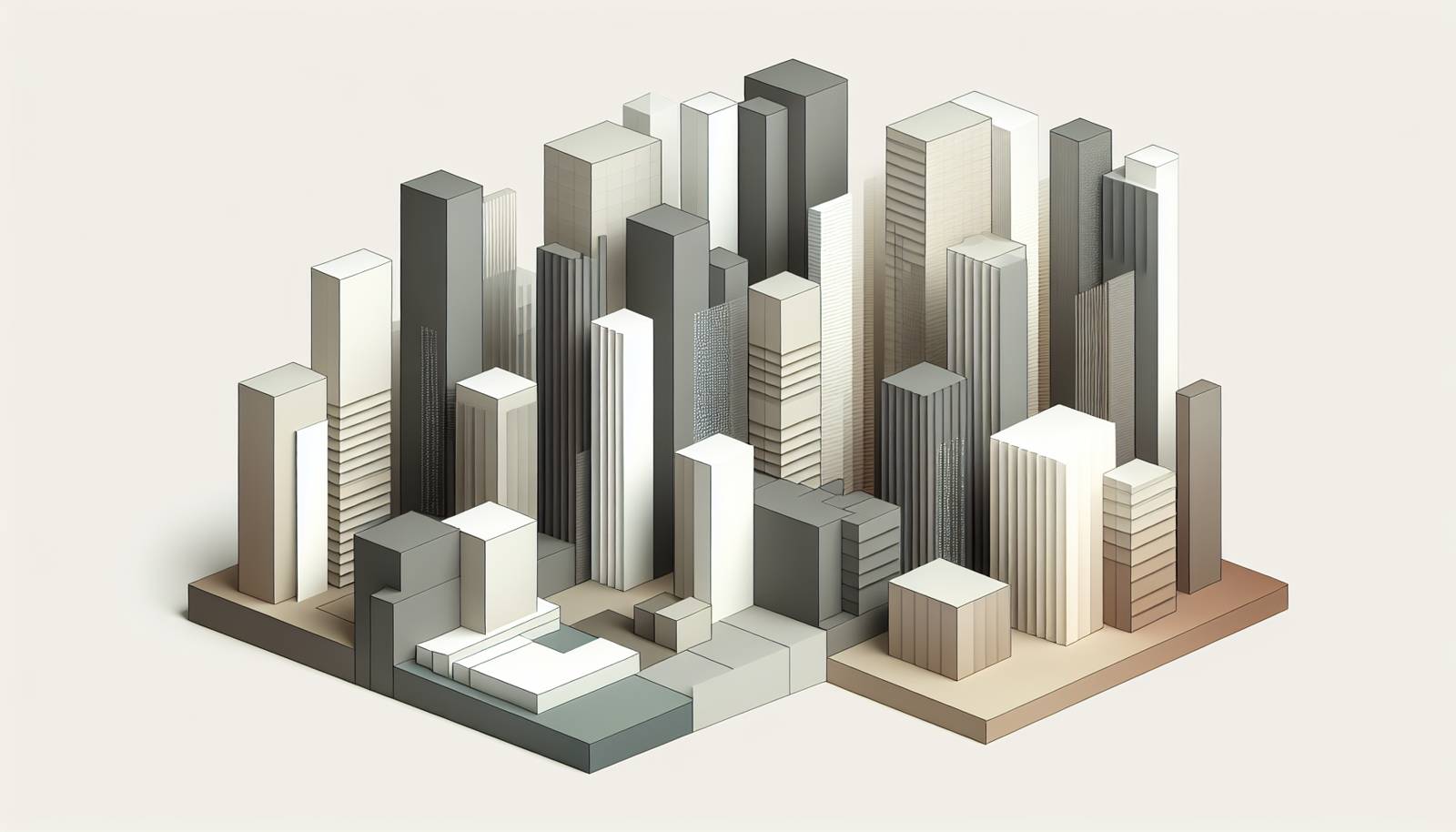
FAQ About The Cultural Significance of Architecture in Urban Development

What role does architecture play in urban development?
Architecture is a critical component in urban development as it shapes the physical and cultural landscapes of cities. It reflects cultural heritage, societal values, and technological advancements, influencing how communities interact within urban spaces. Through design, architecture can enhance the functionality, aesthetic appeal, and sustainability of urban areas.

How do architectural styles reflect cultural identities in urban areas?
Architectural styles often mirror the cultural identities of a region by incorporating local materials, historical influences, and traditional designs. Notable examples include the use of pagodas in East Asian architecture or the incorporation of Islamic geometric patterns in Middle Eastern structures. These styles convey cultural narratives and preserve heritage within urban environments.

What is the significance of historic architecture in modern urban landscapes?
Historic architecture serves as a tangible connection to a community's past, offering insights into historical living conditions, artistry, and societal organization. Preserving historic architecture within modern urban landscapes provides cultural continuity and enriches the urban experience by adding layers of historical context and aesthetic diversity.

How does architecture influence social interaction in cities?
Architecture plays a fundamental role in shaping how people interact socially in cities by designing spaces that facilitate gatherings and communication. Public spaces, such as parks and plazas, and communal buildings like museums and community centers, utilize architectural elements to create inclusive environments encouraging social interaction and community building.

In what ways do economic factors shape architectural practices in urban development?
Economic factors significantly influence architectural practices by determining the affordability of materials, labor, and technologies used in construction. Investment levels in urban development projects affect the scale, sustainability, and innovation potential of architectural designs. Cities with robust economies often prioritize iconic and sustainable architecture that enhances their global image.

Why is sustainability important in urban architecture?
Sustainability in urban architecture is crucial for minimizing environmental impact, reducing energy consumption, and enhancing the quality of urban living. Sustainable architectural practices incorporate eco-friendly materials, energy-efficient systems, and designs that promote resource conservation, thereby contributing to the overall resilience of urban ecosystems.

How does urban architecture integrate modern technology?
Urban architecture integrates modern technology by utilizing smart systems, green building technologies, and innovative construction methods to create efficient and adaptable urban spaces. Examples include the use of automated building systems, energy-efficient lighting, and technologies such as BIM (Building Information Modeling) for design and construction efficiencies.

What is the impact of globalization on urban architectural styles?
Globalization has led to the mixing and blending of architectural styles in urban areas, resulting in diverse and eclectic cityscapes. While this can lead to innovation and modern aesthetic appeal, it also raises concerns about the potential loss of local architectural identities as international design trends often dominate local styles.

How do architects preserve cultural heritage in urban development?
Architects preserve cultural heritage in urban development by designing new structures that harmonize with historical aesthetics, restoring or repurposing old buildings, and ensuring new constructions respect the cultural narratives of the area. Techniques such as adaptive reuse of historic buildings help integrate heritage preservation with modern urban needs.

What are some architectural movements known for their cultural significance?
Architectural movements such as Gothic, Baroque, Modernism, and Postmodernism are renowned for their cultural significance. Each movement reflects the societal values and artistic preferences of its time. For instance, Modernism emphasized simplicity and functionality in response to industrialization, while Postmodernism celebrated diversity and symbolism.

Why is the study of architecture's cultural significance important for urban planners?
The study of architecture's cultural significance is vital for urban planners to ensure the development of spaces that resonate with the local community and its history. Understanding architectural influence helps planners create urban environments that are not only functional but also culturally and historically meaningful, fostering a sense of identity and pride among residents.

How do urban architectural projects affect local communities culturally?
Urban architectural projects can significantly impact local communities culturally by altering their environments and influencing how people live and interact. Thoughtfully designed structures can enhance cultural expression and accessibility, promote community engagement, and strengthen cultural ties through the presence of culturally symbolic or functional public spaces.

What are the challenges of incorporating traditional architectural elements into modern designs?
Incorporating traditional architectural elements into modern designs presents challenges such as balancing aesthetic harmony with contemporary functionality, adhering to building codes while preserving traditional characteristics, and meeting modern technological and environmental requirements. These challenges require innovative design solutions and close collaboration with cultural preservationists.

What is vernacular architecture and its relevance in urban development?
Vernacular architecture refers to building styles that are designed based on local needs, materials, and traditions. It is relevant in urban development as it promotes sustainability and cultural awareness, embodying local wisdom in resource use and community living. Integrating vernacular architecture in urban development supports cultural heritage while addressing environmental concerns.

How can architecture mitigate cultural homogenization in urban settings?
Architecture can mitigate cultural homogenization by emphasizing the uniqueness and diversity of local contexts in urban settings. By designing buildings and spaces that reflect distinct local cultures and traditions, architects can create environments that counterbalance the global trends leading to uniformity, thereby maintaining cultural diversity in urban areas.

What role do cultural landmarks play in urban development?
Cultural landmarks serve as focal points of identity and pride, attracting tourism and investment, and providing a sense of continuity with the past. They often influence the economic, social, and cultural dynamics of urban areas, shaping the character of neighborhoods and contributing to the unique narrative of a city.

How do cultural festivals impact urban architectural design?
Cultural festivals have a significant impact on urban architectural design by encouraging the development of event-specific infrastructure such as amphitheaters, public squares, or temporary structures that accommodate celebrations. These designs can influence year-round urban planning by incorporating flexible and multipurpose spaces that support cultural festivities.

What is the relationship between architectural design and public art in urban areas?
Architectural design and public art are closely intertwined in urban areas, as both shape and enhance the visual and cultural landscape. Artistic elements in architecture, such as sculptures, murals, and installations, contribute to a city's aesthetic appeal, reflect cultural identities, and engage the public in cultural dialogue through visual storytelling.

Can architectural interventions revitalize declining urban areas?
Yes, architectural interventions can revitalize declining urban areas by introducing innovative designs, sustainable practices, and mixed-use development that attract new businesses and residents. Successful interventions often include creating inviting public spaces, improving infrastructure, and restoring historic buildings, all of which can stimulate local economic and cultural growth.

How can cities balance modern architectural development with heritage preservation?
Cities can balance modern development with heritage preservation by implementing policies that protect historic sites, encouraging adaptive reuse, and ensuring that new constructions respect the aesthetic and cultural continuity of the area. Urban development plans that integrate both modern needs and conservation goals are essential for maintaining cultural integrity while fostering growth.
